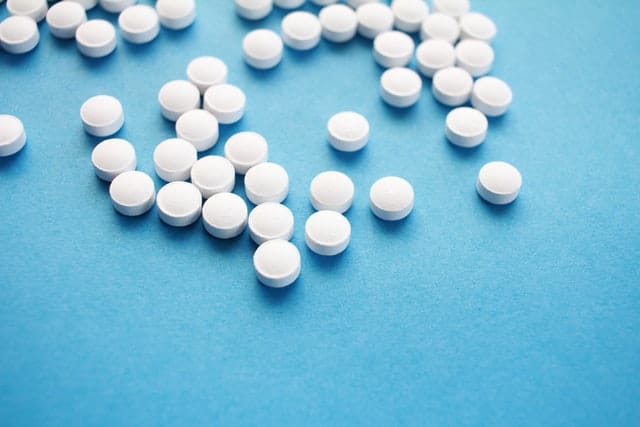The government of India has been taking several initiatives under the Atmanirbhar Bharat campaign to make the country’s healthcare sector self-reliant. For instance, last year it announced a production linked incentive (PLIs) ranging from 5% to 20% to boost domestic manufacturing of critical Active Pharmaceutical Ingredients (APIs).

Further, the government plans to develop three mega bulk drug parks, which will be set up at a cost of Rs 14,300 Cr in association with various states to produce chemicals for life-saving drugs and reduce their imports from China. It also looks forward to increasing import duty of various medicines from 10% to 25% as a measure to boost local manufacturing in the country.
All these moves are being taken to ensure the uninterrupted supply of drugs and affordable healthcare to citizens in the coming years. But before we move forward, let’s take a step back and look at the challenges India has been facing for ages.
India’s dependency on China
Currently, India is 100% reliant on China for blood pressure drugs like heart drug digoxin and losartan, 98.5% for antibiotics like penicillin, and 99% for ciprofloxacin. A KPMG report says that the numbers for diabetes drugs like metformin and glimepiride are almost similar. Moreover, India was reported to be importing close to $3.5 billion worth bulk drugs from across the world in CY 2019, of which, 67% ($2.4 billion) was from China.
To cut down or completely end this reliance, India must build large facilities to ensure domestic manufacturing of medicines as well as the provision of other healthcare services.
Besides, there are other challenges, too. For instance, environmental factor comes as an added disadvantage to India when it comes to bulk production of drugs. Although pharmaceutical plants produce a lot of pollution, API production is a little higher than that. To mitigate this, installing zero-effluent treatment plants is the need of the hour. But at the same time, it adds to the increased cost of manufacturing APIs.
Also read:
IPC successfully concludes BCS based classification of APIs
Digital technologies by Pharma brands can bring down marketing costs
Covaxin prices slashed from Rs 600 to Rs 400 per dose…
Dr Reddy’s launches of Albendazole Tablets USP
WhatsApp chatbot launched to ease demand for Medical Oxygen
How Indian Pharma Manufactures can be a solution to world?
India’s Pharma export market has grown immensely over the years, primarily due to the availability of R&D and manufacturing capabilities at low costs. The country in fact offers greater cost-benefit, which is 37.5% lower than the US and Europe. The country’s manufacturing facilities are backed by cutting-edge equipment and global regulatory approvals is another major advantage that attracts foreign players to outsource work to India.
India is also the largest exporter of OTCs and generics to the US, standing at over 40% market share. It indicates that the country has years of experience and unmatched expertise in this field as well, thereby producing high quality products for customers. As estimated by the Department of Commerce, drugs and pharmaceutical exports for the FY-21 (April 2020-March 2021) touched $24.44 billion, a record growth of 18.07% as compared to $20.58 billion and growth rate of 7.57% for FY20.
In fact, amid the global Covid-19 crisis, Indian CDMOs have demonstrated excellence in the generic industry by rapidly increasing their manufacturing volumes and ensuring that there is no shortage of key products that recorded high consumption levels. The country made its biggest export so far by shipping 50 million tablets of hydroxychloroquine to the US in May 2020.
But the real question is, how do we make this sector self-reliant?
The need for creating an integrated ecosystem
The country currently houses over 3000 pharma companies and over 10,500 manufacturing facilities. It is also the third-largest seller of medicines in the world. However, the country tremendously lags when it comes to developing a new drug molecule. As a result, it is all the more important to bring all the parties – Indian pharma players, CROs, and CDMOs – under one umbrella, and create collaboration opportunities between industry and academic institutions. Doing so will help all these players innovate, expand and strengthen further in their respective journeys.
Similarly, the government should also pay attention to attracting more foreign players to invest in R&D driven pharma companies and CDMOs. For instance, hosting trade shows to showcase Indian R&D capabilities/infrastructure available within Industry and top govt institutions along with talented scientific community in India can be a great way to secure investment opportunities for Indian CDMOs.
Final word
Indian Pharma and CDMOs have performed extremely well over the years on the back of world-class drug substance and formulation production capabilities. The sector will continue to evolve with the advent of new growth opportunities and increasing demands in the near future. But when it comes to making these players self-reliant, addressing the aforementioned challenges with an innovative approach and bringing collaboration opportunities within Indian pharma companies and academia to the table will certainly be the need of the hour.
By Karan Bagaria
(MD, Kemwell Biopharma)
(DISCLAIMER: The views expressed are solely of the author and The Health Master does not necessarily subscribe to it. The Health Master shall not be responsible for any damage caused to any person / organisation directly or indirectly).
For informative videos by The Health Master, click on the below YouTube icon:
For informative videos on Medical Store / Pharmacy, click on the below YouTube icon:
For informative videos on the news regarding Pharma / Medical Devices / Cosmetics / Homoeopathy etc., click on the below YouTube icon:
For informative videos on consumer awareness, click on the below YouTube icon:









